Republished content: Read the original post
I was in the heart of the relatively untamed Karoo at Samara Plains Camp. The crack of dawn marking the beginning of another day – the sky a palette of pastel as the sun inches over the distant horizon. It’s pretty chilly, so I dress in haste, pulling on my walking shoes, anticipation mingling with the crisp morning air. But first coffee…

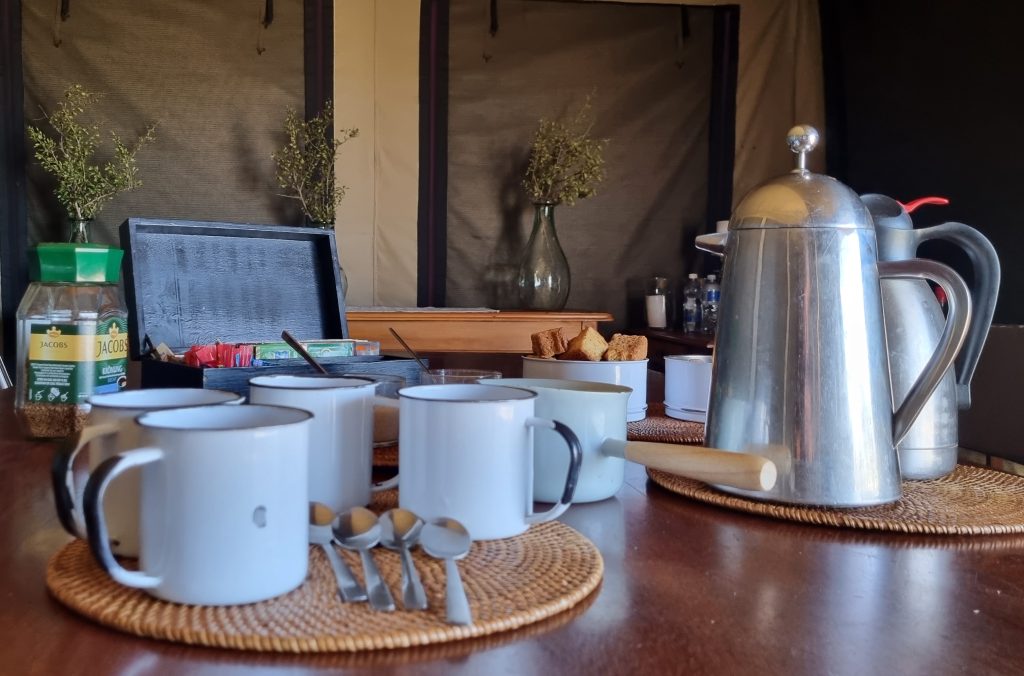
Nestled in the heart of the Eastern Cape of South Africa, the 70,000-acre Samara Karoo Reserve with its diverse landscapes, from open plains to towering mountains, support a wide array of flora and fauna. It wasn’t always like this though. The Samara conservation story begins in 1997 when the Tompkins family embarked on a mission to restore this once-degraded farmland to its former glory as a thriving wildlife sanctuary. What began as a modest endeavour has evolved into an inspiring success story, showcasing what dedicated conservationists can achieve.

It is with this in mind that I head to the communal mess tent is the heart of the camp. It’s where meals are shared, conversations had, and board games played. And where, pre-walk coffee and rusks are enjoyed.
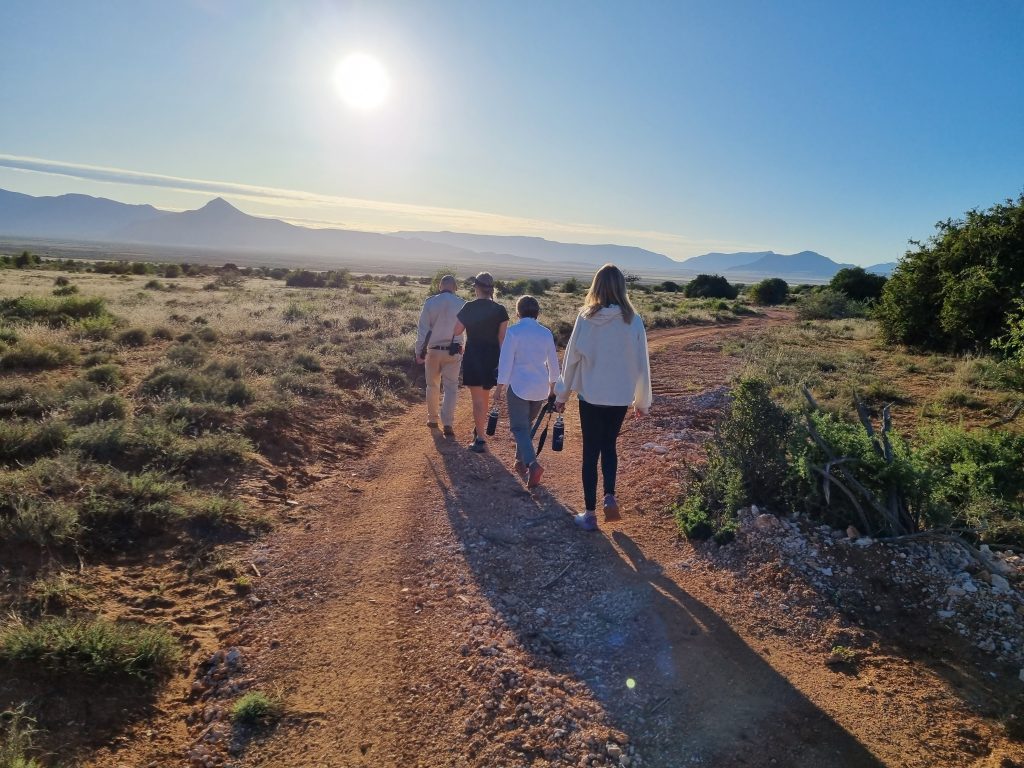
Led by experienced guides, the daily bush walks at Samara Plains Camp are a sensory feast, unveiling the hidden treasures that often elude the gaze from a game dive vehicle. We head out into the dry and scrubby Karoo grassland with Samara GM, Marnus Ochse and guide Mzi Dlakavu – our tracker Elroy Pietersen has gone ahead with the telemetry to try and locate the cheetahs.
Every step reveals a new narrative, the delicate imprints of a steenbok, the ‘bok drolletjies’ (buck droppings) of various antelope, interspersed with the vibrant hues of flowering Karoo bossies (bushes). We inspect an old springbok skull and find an abandoned ostrich egg in the sand, a rhino midden and spot a crash of four white rhino graze in the distance.

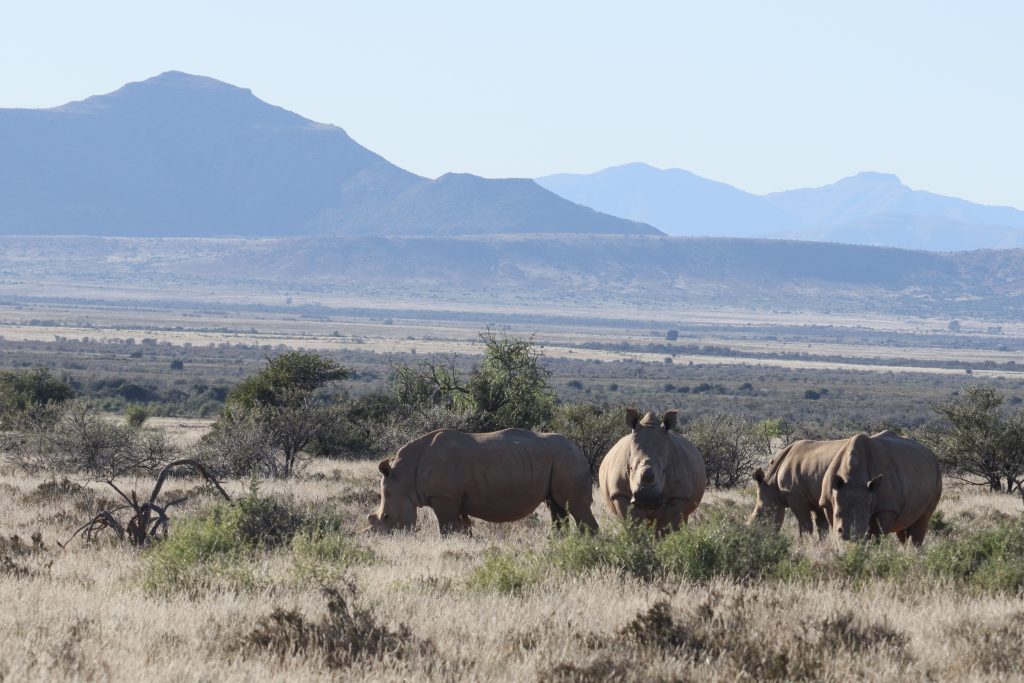
Marnus explains that rhinos don’t have good eyesight but have excellent hearing and sense of smell. The wind whispers gently through the grass – a good thing that it’s in our direction. We walk closer, moving from bush to bush, as quietly as possible. We stop, no more than about 30 metres from them, watching quietly. They know we are there, and come a little closer, curious to our presence. Slowly we back away, in awe of the privilege of being so close to this endangered species.
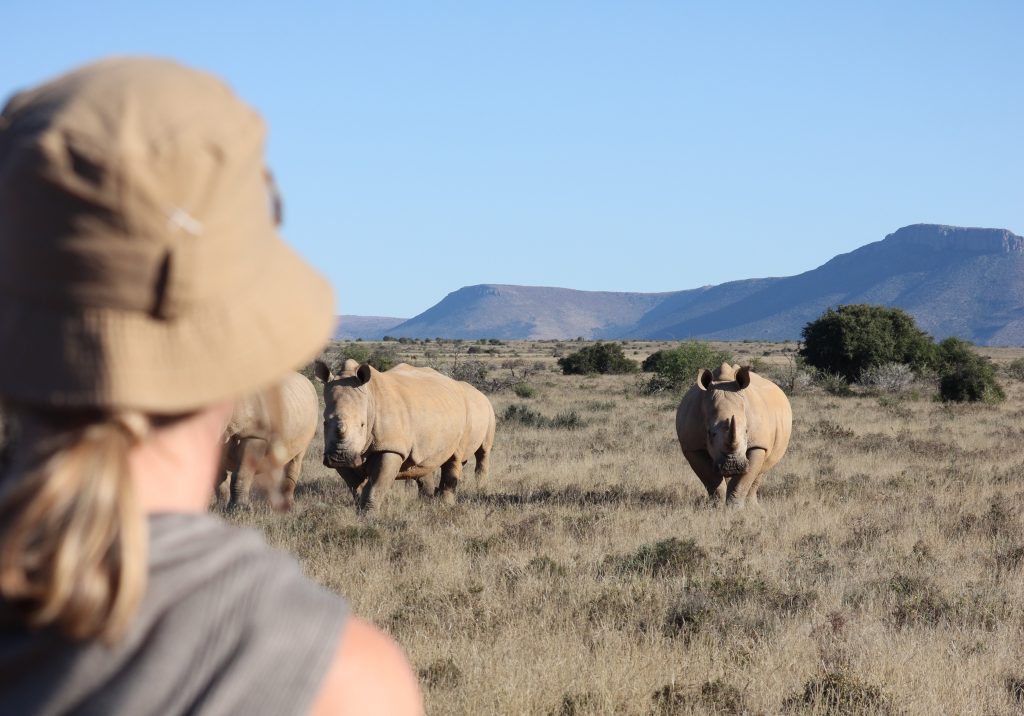
White rhinos were re-introduced to Samara in 2006 to add the number of ‘safe’ conservation spaces available to this heavily poached and endangered species. And have since, in 2013, added the desert-adapted black rhino, which thrives in arid Karoo region. Poaching is a real threat to rhinos, but in partnership with their neighbours, the anti-poaching unit and their K9 unit are keeping their wildlife safe.
Mzi tells us that Elroy has located the cheetahs, a mom, and her sub-adult cubs. Excitement mounts, and we walk briskly. A herd of eland scatter in a cloud of dust. The cheetah are on the move, we increase our pace and finally reach them. They are quite habituated to the presence of humans, so we slowly move closer. We watch as they move stealthily through the grass, choosing to rest in the shade of a scrubby bush. Aware of our presence but not concerned.

One of the most significant achievements at Samara is the successful reintroduction of cheetahs to the reserve. Samara’s cheetah population, once on the brink of local extinction, is now thriving. From the introduction of three cheetah. Including the iconic Sibella, in 2004 to a successful cheetah population that has contributed to conservation in many other national parks and reserves throughout Southern Africa though the Endangered Wildlife Trust’s Cheetah Metapopulation Project.
We head back to camp for brunch (thank you Mzi for bringing the vehicle!) and enjoy fresh fruit, more coffee, and a sumptuous spread cooked over the campfire – all served on stylish enamelware. The wind has come up preceding a cold front blowing in from the south, so we retreat to our tents for a hot ‘bucket’ shower bit of R&R.

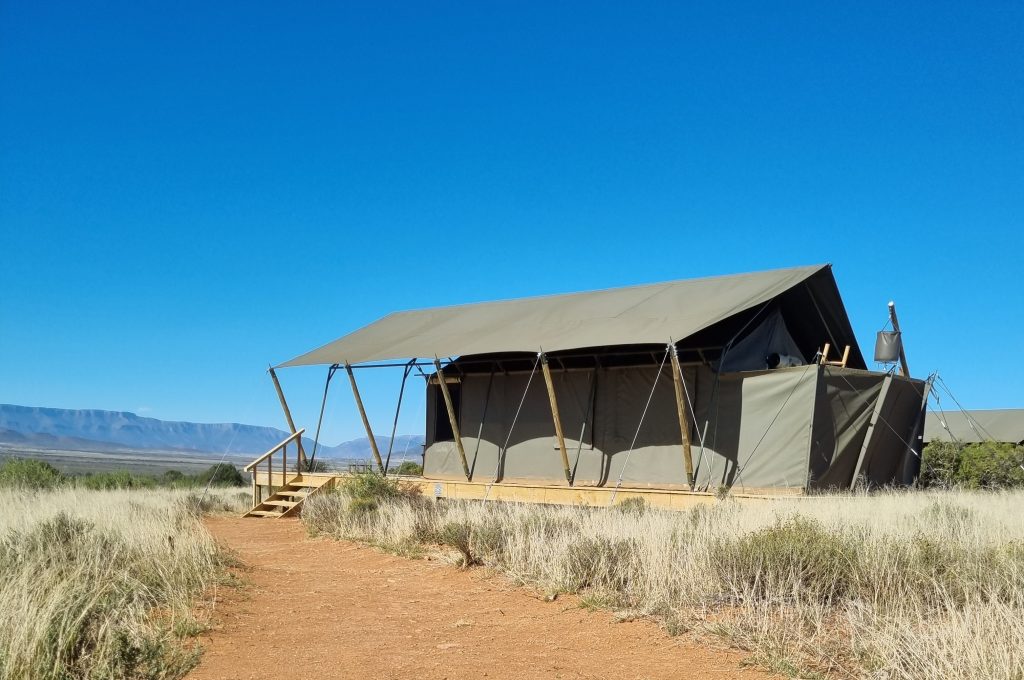
My canvas tent, which is one of four, is tucked discreetly behind a thicket of vegetation. The ensuite bathroom, with its indoor flush loo and washbasin an unexpected luxury for a wilderness experience, the open-air ‘bucket’ shower, which, under normal circumstances, would be a delight, had me retreating out the icy wind. Fortunately my tent came equipped with a small fireplace which soon had me relaxing in my fluffy gown, coffee nearby and juicy novel in hand.

Intrepid travellers that were, and suitably kitted out in jackets and scarves, we set out for an afternoon game drive. The late afternoon sun had lost its heat and we huddled into our seats as we traversed the open plain. The same rhino we had seen that morning had caught the interest of a rhino bull and he was trailing behind as they crossed the plain – Mzi explained that one of the females was coming into oestrus, and that he would follow them until she was ready.
A herd of springbok leap across the red ribbon of road in front of us, a couple of gemsbok (aka South African oryx) watch nonchalantly as we pass by, and a herd of eland watch us for a few moments before retreating to the safety of the thicket. Giraffes, towering and elegant, move gracefully across the plain, from one thorny thicket to the next. They walk right by us, bending down awkwardly to drink at a pool of water alongside the road.


A tiny three-month old rhino suckles on her mother, as a juvenile Gabar goshawk watches from its bushy perch. We round the corner to what is almost every safari visitors wish list sighting – lions! Not just one, but a whole pride of them.
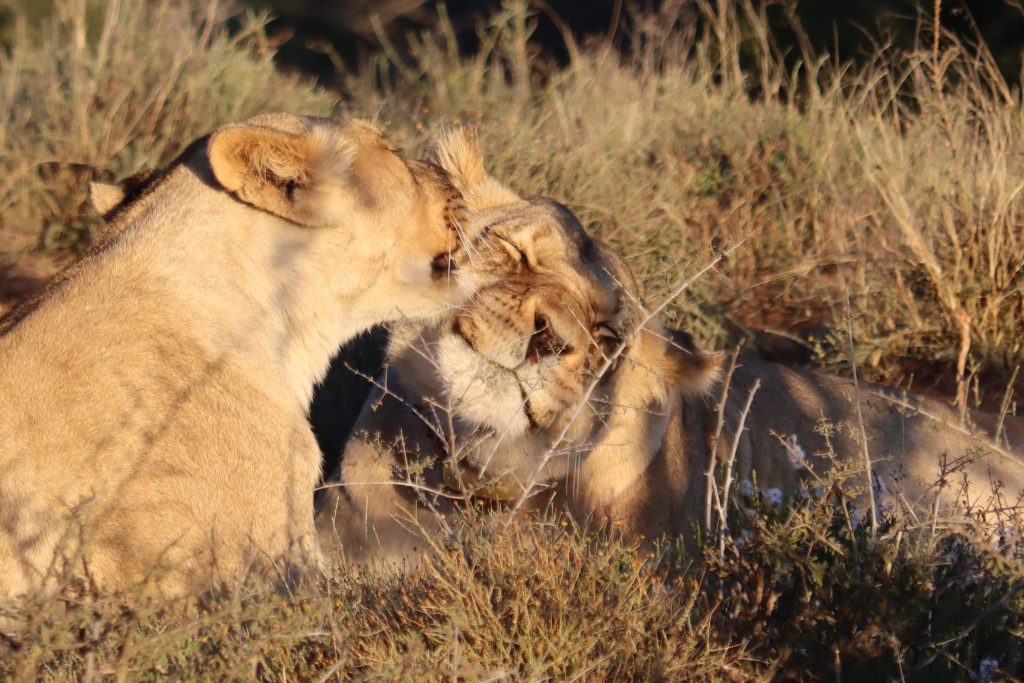
We watch as they yawn, show by affection by rubbing heads and by licking one another… until one of the young males decides to heat things up with a little confrontation. The older male (his dad, actually) wasn’t having any of that ‘teenage’ rebellion and told him off, but as with most teenagers, they don’ take no for an answer, so he tried again. This time around the telling off came with a flowing mane and much speed. Suitably reprimanded he flopped down next to his brother as if nothing had happened. Typical!
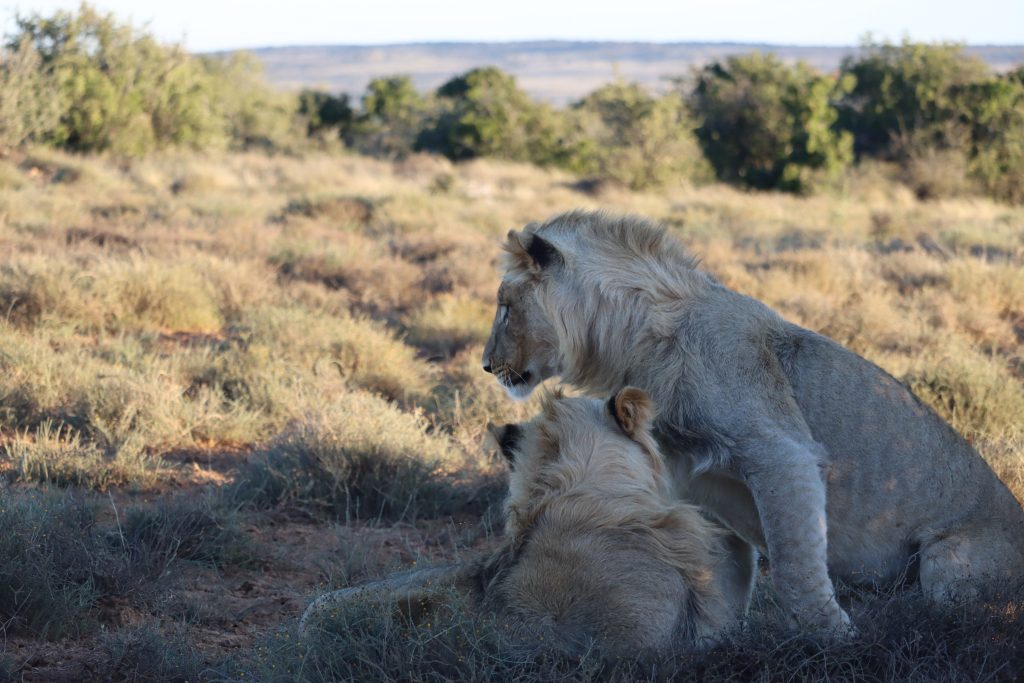
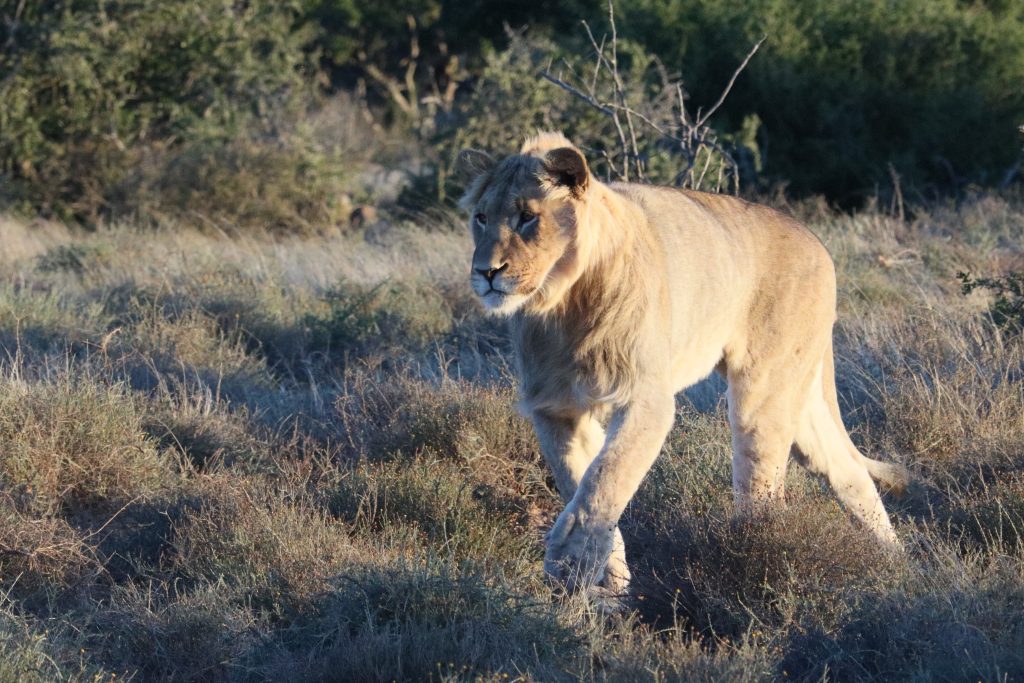

In 2018 the first free-roaming lions in over 180 years were re-introduced to Samara restoring the function of lion predation and providing a wild sanctuary for this iconic species. The founder lion pride consisted of several unrelated males and females to ensure genetic diversity, thereby contributing to genuine lion conservation efforts.
As the sun dipped towards the horizon, the temperatures dropped, and the traditional sundowner bush stop was traded for an Amarula back at camp in front of the fire. Glasses clinked as we toasted our wonderful day in this wilderness paradise, where conservation is top of mind and the success thereof is celebrated.
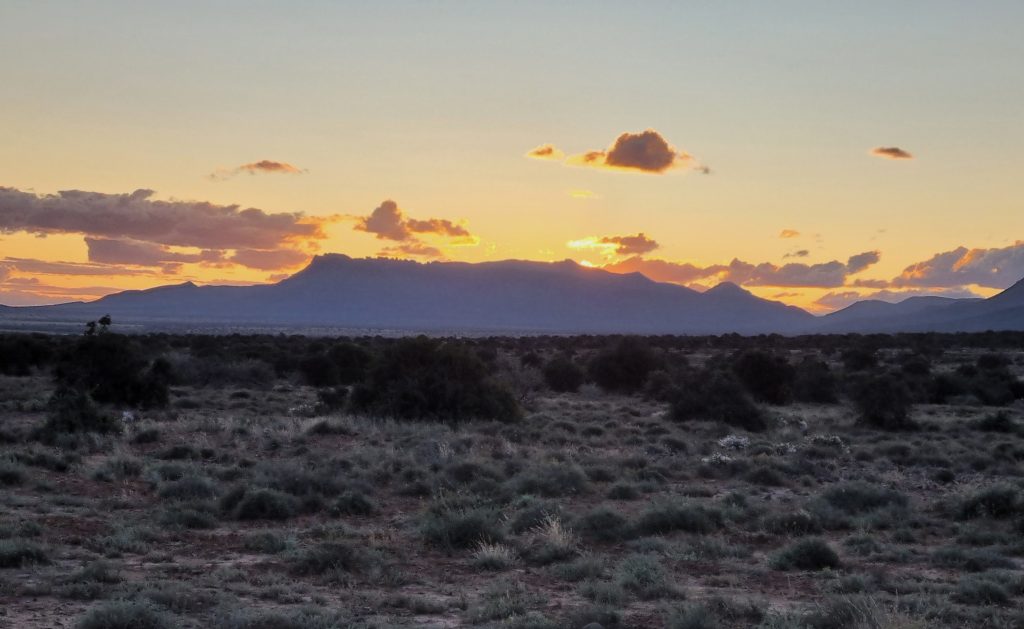
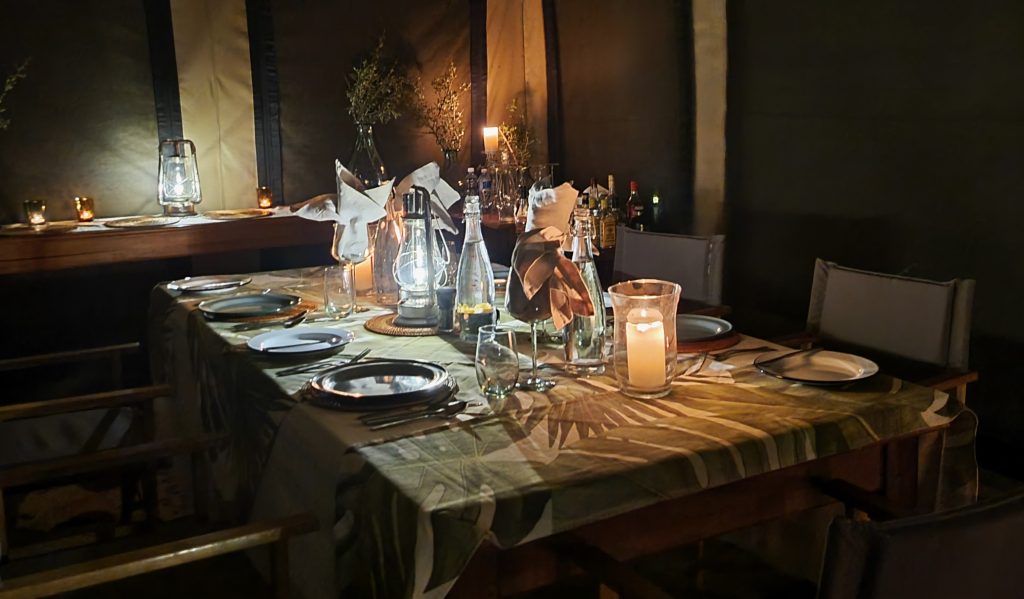
Amid the gentle flicker of oil lanterns, and the dancing flames of the fireplace, we gather at the communal dining table – our dinner under the stars around the crackling campfire unfortunately postponed by the inclement weather, but there’s always a next time. The chef conjured up a feast, which together with wonderful South African red wine, pays homage to the bounties of this wonderful land.
I lay in comfort under the snug duvet, a hot-water bottle warming my feet, I hear the wind and the much-needed rain and consider the hardships that explorers of old had to endure and watch the dancing shadows as the fire in my fireplace gradually dies down.
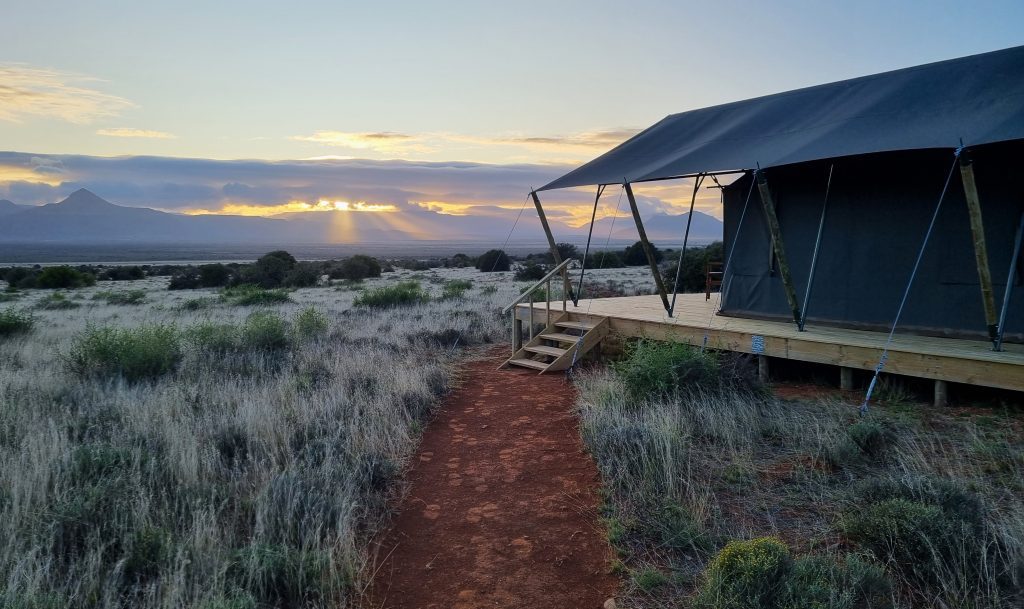
This off-grid oasis, where simplicity meets luxury and where every moment is a feast for the senses, offers an immersion into the wild uncomplicated lifestyle of explorers’ past. Here, amidst the flora and fauna of the Karoo, I discover that luxury isn’t just about lavish comforts; it’s about the intimate connection shared with the earth, the sky, and every living being that calls this place home.
The post Embracing the wild at Samara Plains Camp appeared first on RESPONSIBLE TRAVELLER.